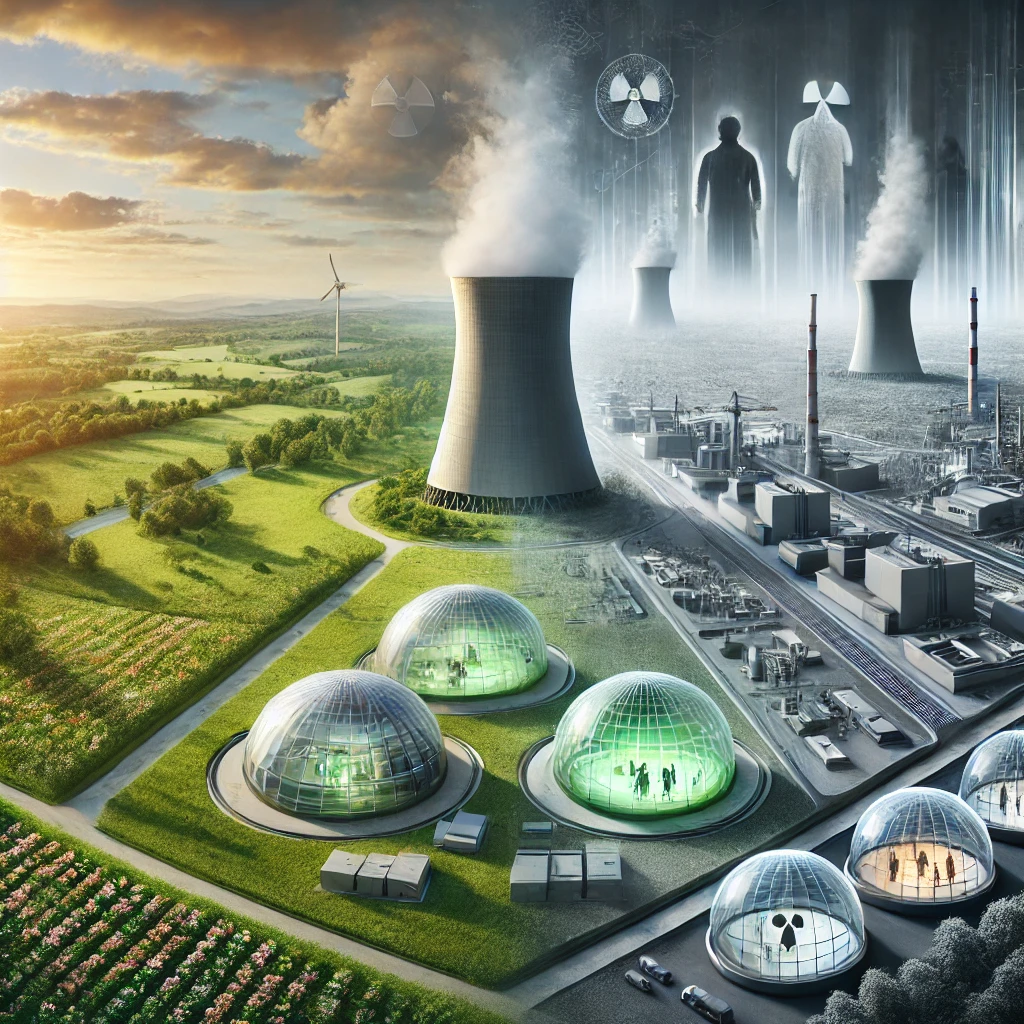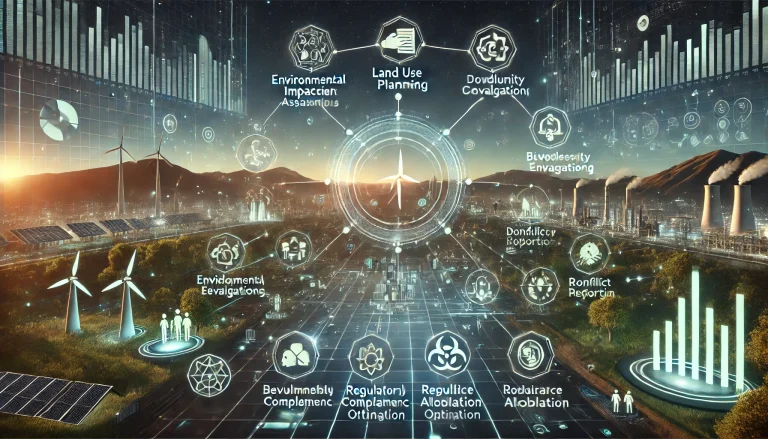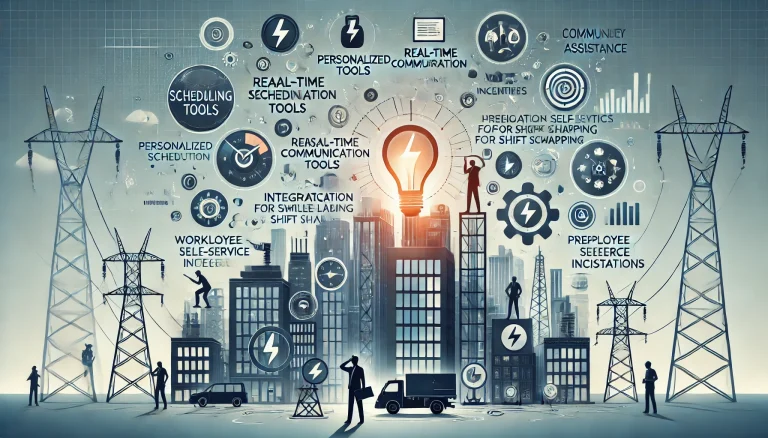Problem Statement :
The nuclear energy sector faces a significant challenge in the form of public fear and negative perception, which has been deeply ingrained by high-profile accidents like Chernobyl in 1986 and Fukushima in 2011. These events have left a lasting impact on the public’s view of nuclear energy, leading to widespread fears about its safety and environmental impact. This fear, often fueled by misconceptions and a lack of understanding, has created substantial obstacles to the expansion of nuclear energy, despite its potential as a low-carbon and reliable power source.
Nuclear energy can play a crucial role in combating climate change by providing a stable and substantial supply of electricity without the greenhouse gas emissions associated with fossil fuels. However, public opposition, driven by concerns over safety, radioactive waste, and the potential for catastrophic accidents, poses a significant barrier to its wider adoption. Overcoming this negative perception is essential for nuclear energy to fulfill its potential in the global energy mix and to help reduce carbon emissions on a large scale.
Pain Points:
- Public Fear of Nuclear Accidents: Deep-seated fear due to past nuclear incidents leads to strong public opposition.
- Misconceptions About Radiation: Exaggerated fears about radiation exposure contribute to negative perceptions.
- Environmental Concerns: Public worry about radioactive waste and its long-term management.
- Lack of Trust in Regulators: Distrust in government and industry regulators due to perceived failures in safety oversight.
- Media Amplification of Risks: Media tends to highlight the dangers of nuclear energy, reinforcing negative views.
- Political Resistance: Policymakers may hesitate to support nuclear energy due to public opposition.
- Nuclear Waste Disposal Issues: Concerns about the long-term safety and storage of nuclear waste.
- High Costs: Financial risks associated with building and maintaining nuclear power plants are often emphasized.
- Limited Public Education: Lack of effective education campaigns to counter misconceptions.
- Association with Nuclear Weapons: Public fear due to the perceived link between nuclear energy and weapons proliferation.

Future Vision:
- Comprehensive Public Education Campaigns: Global initiatives to educate the public about nuclear energy’s safety and benefits.
- Enhanced Safety Measures: Advancements in nuclear safety technologies and transparent communication.
- Innovative Waste Management Solutions: Development of advanced technologies to manage and minimize nuclear waste.
- Community Engagement Programs: Involving local communities in nuclear energy discussions to build trust.
- Media Collaboration: Partnering with media to provide balanced coverage of nuclear energy.
- Government Support: Advocacy for government policies that support nuclear energy and address public concerns.
- Demonstration Projects: Building next-generation nuclear plants to showcase improved safety and efficiency.
- International Cooperation: Strengthening global nuclear safety standards and emergency response.
- Decoupling from Weapons: Clearly distinguishing civilian nuclear energy use from military applications.
- Low-Carbon Future Vision: Positioning nuclear energy as essential in achieving global climate goals.
Use Cases:
- Nuclear Energy for Grid Stability: Providing reliable base-load power to complement renewable energy sources.
- Advanced Reactor Demonstrations: Deploying small modular reactors (SMRs) in remote or underserved areas.
- Public-Private Education Partnerships: Collaborations to inform the public about nuclear energy’s role in climate change.
- Community-Supported Nuclear Projects: Developing nuclear projects with direct community involvement.
- Nuclear-Powered Desalination: Using nuclear energy to power desalination plants in arid regions.
- Research and Development Centers: Establishing centers focused on nuclear safety technology advancements.
- Waste-to-Energy Nuclear Solutions: Recycling nuclear waste into additional energy through advanced reactors.
- Global Safety Programs: Implementing international nuclear safety and emergency preparedness programs.
- Nuclear Energy in Industrial Processes: Decarbonizing industries using nuclear energy.
- Educational Media Campaigns: Launching media campaigns to address misconceptions about nuclear energy.
Target Users and Stakeholders:
Target Users:
- User Group: General public, especially those near nuclear plants.
- Age Group: 25-65 years old.
- Gender: M/F.
- Usage Pattern: Engaging with educational content and participating in community forums.
- Benefit: Better understanding of nuclear energy, reduced fear, and increased support.
Stakeholders:
- Nuclear Energy Companies: Invest in safety technologies and public education.
- Government and Regulatory Bodies: Ensure safety and promote nuclear energy through supportive policies.
- Environmental Organizations: Advocate for nuclear energy’s role in reducing carbon emissions.
- Educational Institutions: Provide accurate nuclear energy research and education.
- Media Outlets: Offer balanced coverage of nuclear energy.
- Local Communities: Engage in nuclear energy discussions and decision-making.
- International Organizations: Coordinate global nuclear safety and emergency preparedness efforts.
- Energy Sector Professionals: Promote nuclear energy within the broader energy sector.
- Investors and Financial Institutions: Fund nuclear projects with advanced safety measures.
- Public Health and Safety Experts: Provide insights into the health and safety implications of nuclear energy.
Key Competitors:
- Rosatom: Global leader in nuclear technology and public outreach.
- EDF (Électricité de France): Promotes nuclear as a safe and essential energy source.
- Westinghouse Electric Company: Develops advanced nuclear reactors and safety technologies.
- Toshiba Energy Systems & Solutions Corporation: Focuses on rebuilding trust in nuclear energy post-Fukushima.
- China National Nuclear Corporation (CNNC): Expanding nuclear power both domestically and internationally.
Active Startups:
- Terrestrial Energy: Develops molten salt reactors (MSRs) with enhanced safety and efficiency.
- NuScale Power: Focuses on small modular reactors (SMRs) with safety features.
- Oklo: Innovates micro-reactors designed to address public concerns about nuclear energy.
- Radiant: Develops portable nuclear reactors for remote and off-grid applications.
- Kairos Power: Works on fluoride salt-cooled high-temperature reactors (FHRs) to offer safer nuclear solutions.
- Moltex Energy: Specializes in stable salt reactors (SSRs) that address safety and waste management concerns.
- Transatomic Power: Develops reactors that recycle nuclear waste into fuel, reducing waste and increasing energy output.
- X-Energy: Focuses on high-temperature gas-cooled reactors (HTGRs) that prioritize safety and efficiency.
- ThorCon Power: Works on thorium-based reactors that offer safer and more sustainable nuclear energy.
- Flibe Energy: Develops liquid fluoride thorium reactors (LFTRs) to provide safe and reliable nuclear power.
Ongoing Work in Related Areas:
- Safety Technology Advancements: Developing new safety features for next-generation nuclear reactors.
- Public Education Initiatives: Launching global campaigns to educate the public about nuclear energy.
- International Nuclear Safety Collaboration: Strengthening global safety standards and emergency response strategies.
- Nuclear Waste Management Research: Innovating in waste reduction and management technologies.
- Media and Public Relations: Improving the narrative around nuclear energy through positive media coverage.
- Community Engagement Projects: Implementing community-driven nuclear energy projects.
- Advanced Reactor Demonstrations: Deploying small modular reactors (SMRs) and advanced reactors to showcase safety and efficiency.
- Nuclear-Powered Industrial Processes: Integrating nuclear energy into industrial applications to reduce carbon emissions.
- Global Policy Advocacy: Promoting supportive nuclear energy policies at international forums.
- Next-Generation Nuclear R&D: Establishing research centers to advance nuclear technologies and address public concerns.
Recent Investments:
- Rosatom: Invested $1 billion in 2023 in public outreach and advanced reactor development.
- EDF: Committed $500 million in 2022 to nuclear safety and public education initiatives.
- Westinghouse Electric Company: Allocated $300 million in 2023 to develop advanced nuclear safety technologies.
- Toshiba Energy Systems & Solutions Corporation: Invested $250 million in 2022 to rebuild trust in nuclear energy with advanced safety systems.
- CNNC: Invested $600 million in 2023 to expand nuclear power domestically and internationally, with a focus on safety and public perception.
- Terrestrial Energy: Raised $100 million in 2023 to advance its molten salt reactors and public education efforts.
- NuScale Power: Secured $150 million in 2023 to deploy small modular reactors and educate the public about their benefits.
- Oklo: Received $75 million in 2022 to develop micro-reactors and address public safety concerns.
- Radiant: Raised $50 million in 2022 to develop portable nuclear reactors for remote applications.
- Kairos Power: Secured $125 million in 2023 to advance fluoride salt-cooled high-temperature reactors and improve public understanding of nuclear safety.
Market Maturity:
- Emerging Awareness: The market is still in an emerging phase, with growing awareness of nuclear energy’s role in combating climate change.
- Public Perception Challenges: Significant efforts are needed to overcome public fear and misconceptions.
- Technology Advancements: Ongoing advancements in safety and waste management technologies are helping to improve public trust.
- International Collaboration: Increased global cooperation on nuclear safety is boosting the market’s credibility.
- Investment Growth: Rising investments in nuclear energy projects and public education are signs of market maturity.
- Policy Support: Governments are beginning to implement supportive policies, but more is needed to fully mature the market.
Summary:
The nuclear energy sector faces a significant challenge due to public fear and negative perception, largely stemming from historical accidents like Chernobyl and Fukushima. These events have left a lasting impact, creating widespread misconceptions about the safety and environmental impact of nuclear power. Despite being a low-carbon and reliable source of energy, nuclear power struggles to gain public acceptance, which is crucial for its expansion and role in combating climate change.
The primary pain points include deep-seated public fear, misunderstandings about radiation, environmental concerns, distrust in regulators, and media amplification of risks. Overcoming these challenges requires a multifaceted approach involving comprehensive public education campaigns, advancements in safety technologies, innovative waste management solutions, and active community engagement. Governments and industry leaders must collaborate to create supportive policies and promote the benefits of nuclear energy.
The future vision for nuclear energy includes positioning it as a key component in the global fight against climate change, supported by modern reactors with enhanced safety features, transparent communication, and strong community involvement. By addressing public fears and misconceptions, nuclear energy can secure its place in a sustainable, low-carbon energy future.
This transition is supported by ongoing investments in advanced nuclear technologies, public outreach, and global safety standards, which are essential for building trust and ensuring the safe and effective use of nuclear power.



